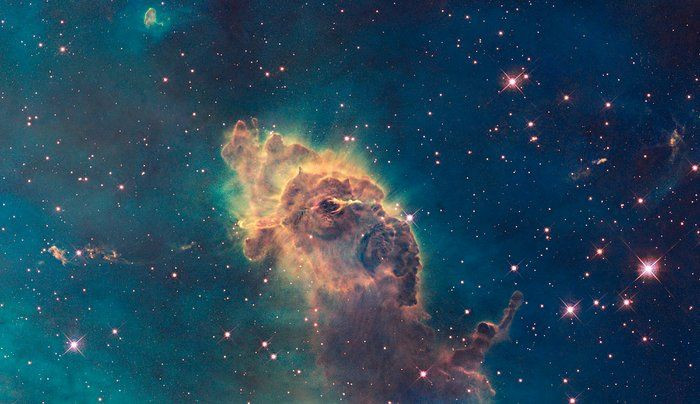Monstrous-Looking, Star-Forming Nebula Captured By Hubble Space Telescope [PHOTO]

KEY POINTS
- The ESA shared a photo taken by the Hubble Space Telescope
- The image shows a portion of a massive distant nebula
- The nebula's monstrous-looking shape was sculpted by stellar emissions
The European Space Agency (ESA) recently shared a photo of a monstrous-looking cosmic object captured by the Hubble Space Telescope. The image features a portion of a star-forming pillar that’s part of a massive nebula.
The cosmic object featured in Hubble’s photo has been identified as a portion of the Carina Nebula. This region lies within the Carina constellation and is about 7,500 light-years from Earth’s neighborhood.
According to the ESA, Hubble’s photo of the object was taken using visible light. It shows the tip of a massive cosmic pillar that’s about three light-years long. Sculpted by stellar winds and radiation emitted by stars, the pillar resembles the head of a giant monster in space.
The ESA explained that aside from shaping the general structure of the pillar, the emissions from nearby stars also provide the nebula with the necessary stellar material to trigger star formations within it.
“Taken in visible light, the image shows the tip of the three-light-year-long pillar, bathed in the glow of light from hot, massive stars off the top of the image,” ESA explained in a statement. “Scorching radiation and fast winds (streams of charged particles) from these stars are sculpting the pillar and causing new stars to form within it. Streamers of gas and dust can be seen flowing off the top of the structure.”
NASA, which also operates Hubble, has taken different images of the Carina Nebula using different wavelengths. These include an X-ray image of the cosmic structure, which was taken by the agency’s Chandra Observatory.
According to NASA, the X-ray image revealed several bright spots within a region of the nebula. The agency explained that these might indicate that several massive stars in the region have already died and exploded. The bright spots could be the supernova remnants of the stars.
“Chandra's X-ray vision provides strong evidence that massive stars have self-destructed in this nearby star-forming region,” NASA stated. “Firstly, there is an observed deficit of bright X-ray sources in the area known as Trumpler 15, suggesting that some of the massive stars in this cluster were already destroyed in supernova explosions.”
© Copyright IBTimes 2025. All rights reserved.





















